Asus ROG Claymore II Review
A high-end gaming keyboard with a modular design
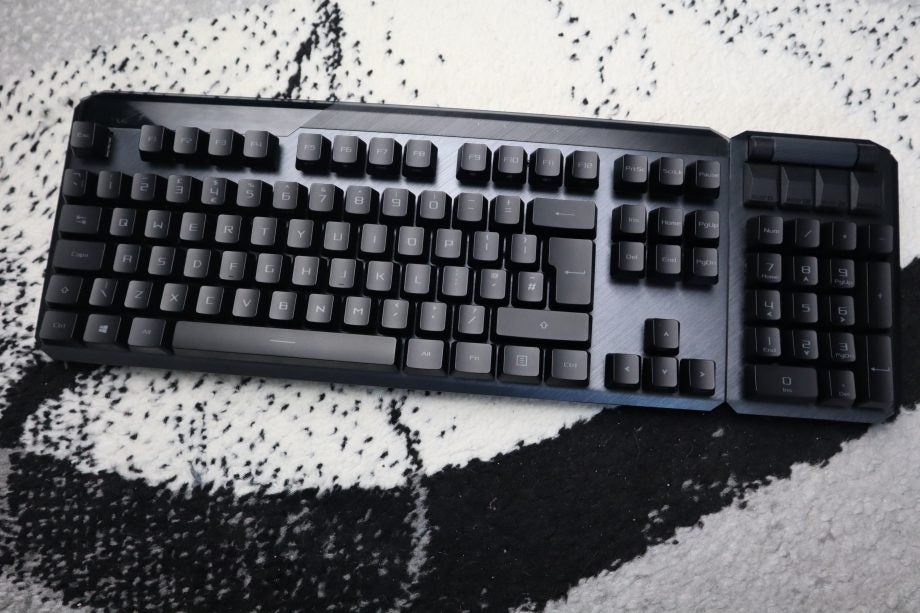

Verdict
The Asus ROG Claymore II is a great gaming keyboard for who wants to cut cables and customise their keyboard, both in terms of hardware and software. Its modular design is clever, the switches feel pretty decent overall, and it offers an excellent gaming experience. Price is likely to be an issue for most, but if you have the money to burn, this is one of the best options available.
Pros
- Premium build quality
- Modular design is ingenious
- Clicky optical switches feel decent
Cons
- High price
- Non-attachable wristrest
- Cheap-feeling keycaps
Availability
- UKRRP: £249.99
- USARRP: $269.99
- EuropeRRP: €279.99
Key Features
- Modular design: With a detachable number pad, you can customise the setup of the keyboard.
- Optical Mechanical Switches: The RX Red and RX Blue switches enable a great performance and snappy feel.
- Lag-free wireless connection:This keyboard offers a 1ms response time in both wired and 2.4 GHz wireless modes.
Introduction
The Asus ROG Claymore II is a ludicrously expensive gaming board that brings modular design to the forefront, along with clicky opto-mechanical switches, wireless connectivity, and incredible build quality.
It joins the likes of the Razer Huntsman V2 Analog and the SteelSeries Apex Pro right at the very top end of the keyboard world, flaunting features that you simply won’t find anywhere else in the mainstream space.
But are the Claymore II’s unique features just a gimmick, or can it make a name for itself as one of the absolute best gaming keyboards out there?
Design
- Modular design is a brilliant inclusion
- Military-grade construction with a blue-hued metal top plate
- ABS keycaps do possibly cheapen the look a little
For a keyboard that’s the same price as an Xbox Series S, there’s arguably plenty of expectation regarding its feel and build quality. I’m happy to say that Asus has met those expectations with the ROG Claymore II.
Even for the price, this feels like a remarkably sturdy board. There’s no sign of deck flex whatsoever, and it comes with a nice, blue-tinged metal plate that looks like it’s been ripped from one of Logitech’s premium offerings. The Claymore II feels as solid as a rock.
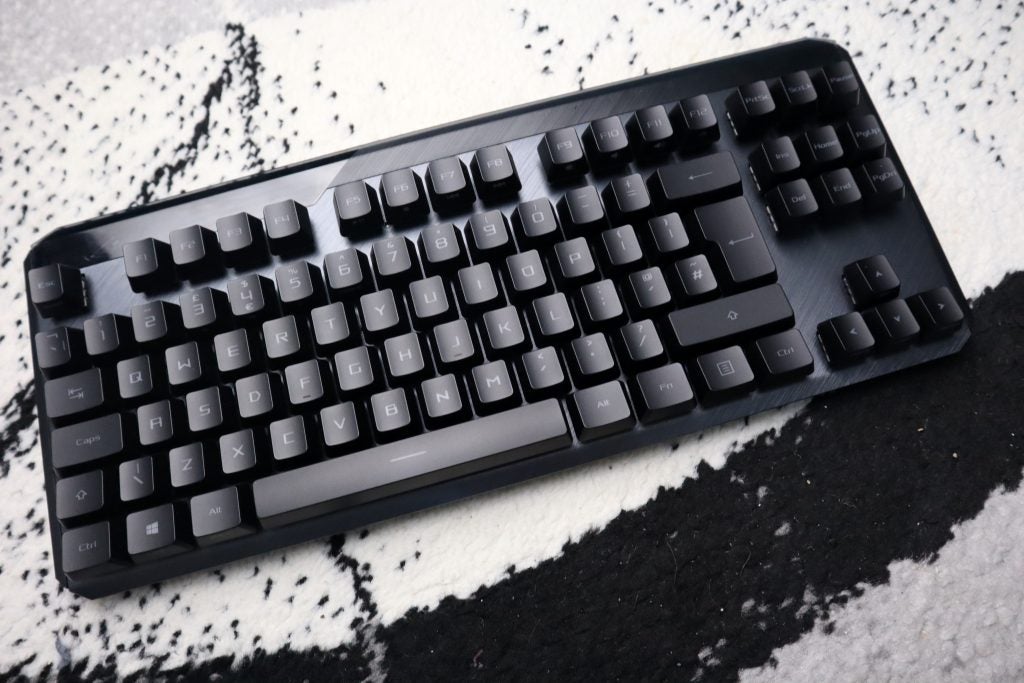
It’s one of the best-looking keyboards I’ve tested in a while, displaying a class that other manufacturers simply can’t compete with. There’s the usual ROG trimmings, too: it has decent lines and conveys a certain sharpness to it, which was reflected in older models such as the Strix Scope TKL Deluxe I took a look at last year.
The most significant aspect of the Claymore II isn’t the way it’s been built or the fact it has an attractive metal top plate; it’s the fact that it’s modular. The number pad is detachable, connecting to the main board through a secure mechanism on either side. Not only is this a great idea for space-savers, but it works for lefties too.
The number pad itself feels as well-made as the keyboard, and comes with its own set of four tactile macro keys and a smooth volume roller. The only negative is that it can be a little fiddly to attach at first, but once you’ve done it a few times, it’s pretty simple to do.
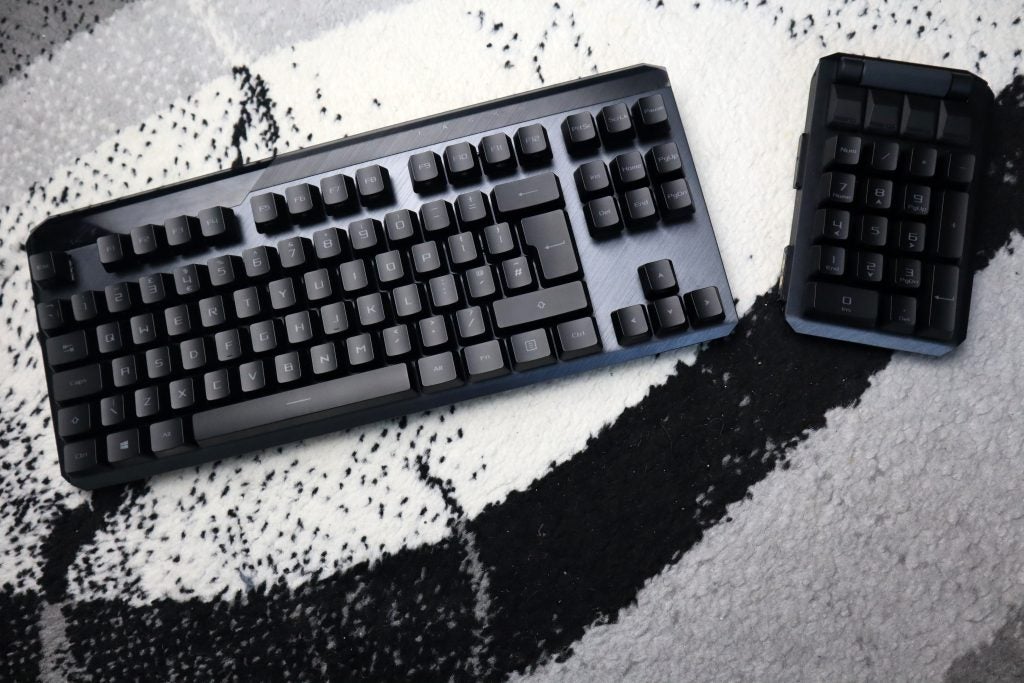
Keycaps are, by comparison to the counterparts on Razer’s board, made of the usual ABS plastics, which does cheapen the Claymore’s feel a smidgen. However, they’re double-shot moulded at least, which does allow the sweet RGB backlighting to shine through rather well. Their stems are a little odd, though, which means that you can’t swap out these keycaps for any other standard MX stem ones since the RX switches on offer don’t use the same top.
Asus is generous enough to include a wristrest, but unlike versions from its competitors, there appears to be no proper way to attach it to the keyboard, be it through clips or magnets. It’s comfortable enough, but can feel a little cheap in the context of the rest of the board.
Performance
- Clicky opto-mechanical switches feel good under finger
- Some users may feel a perceivably short travel
- Latency-free wireless connection is fantastic
On the front of switches, Asus is sticking with its new RX Opto-mechanical Blues. These offer a similar feeling to Logitech’s older Romer-Gs in terms of travel, despite the RX units offering the standard 4mm of travel with a slightly higher 1.5mm actuation point.
The click feels good, although it sounds a tad shallow in comparison to the others on offer. Overall, the switch feel is a little hollow, as is the case with opticals. I experienced the same with the Razer Huntsman Mini, for example, which has the same kind of switches inside.
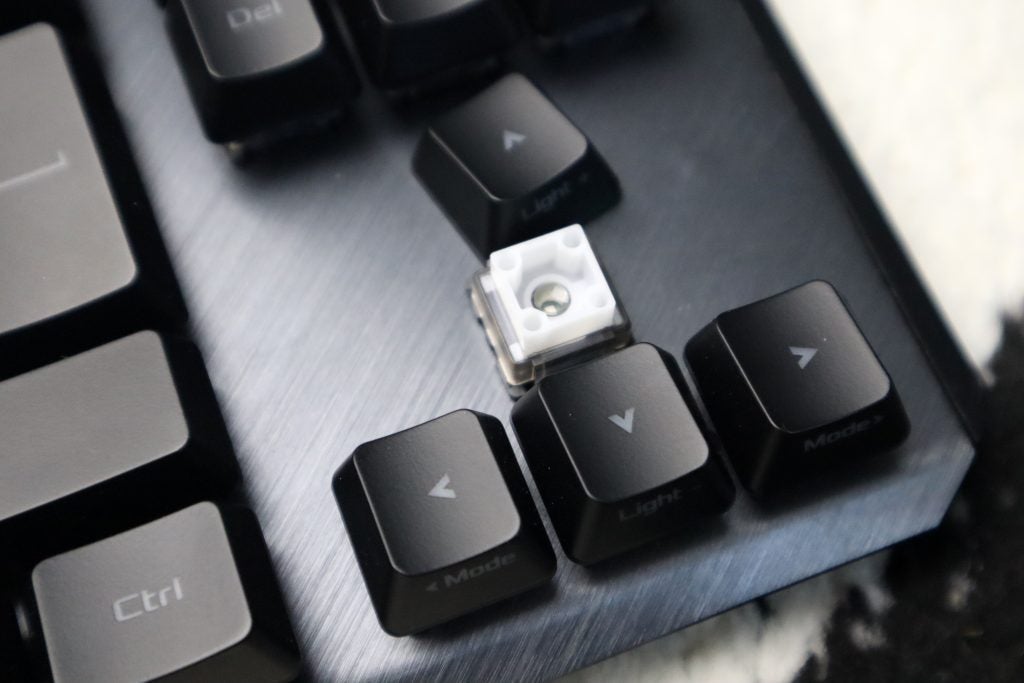
The RX Blue’s 65g actuation force makes them pretty heavy, but for a typist, they feel good. Just be wary of the travel feeling slightly shorter than anticipated, and the loudness that comes with clicky switches in general.
There’s no sign of these having the adjustable points of the Huntsman V2 Analog or SteelSeries’ Apex Pro, which does peg the Claymore back a little by comparison. However, its 1.5mm actuation does make it speedier than the more standard keyboards out there, decreasing the travel required for inputs.
The Claymore II is wireless, featuring a decent battery life of 43 hours with full RGB goodness, or 144 hours with lighting off. For a full-on gaming board, this is excellent, practically eating the competition alive – it beats Razer’s own premium wireless offering by four times with full RGB on.
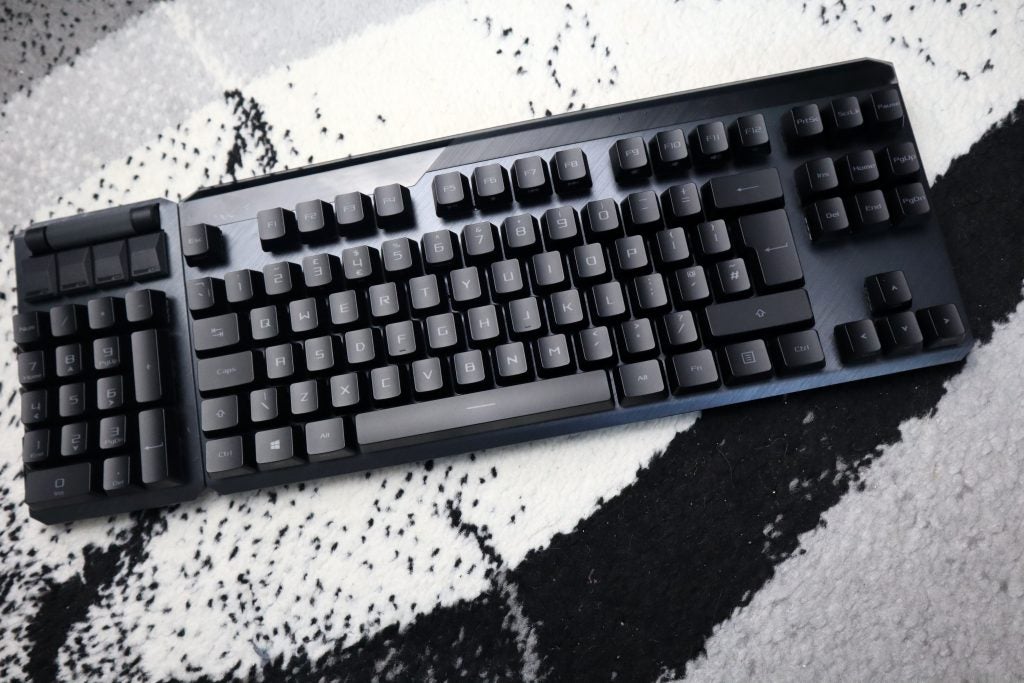
Charging comes courtesy of a USB-C connector, marking this new Claymore as one of the most forward-thinking keyboards around. It features a USB-A passthrough that requires power, but can be used for plugging in a mouse, external hard drive or maybe your phone for charging.
There’s also the usual 1ms response time thanks to the Claymore’s latency-free wireless connection, blurring the lines between a wired and wireless experience.
Software and lighting
- Relatively bright RGB lighting
- ROG Armoury provides the usual customisation options
- Wireless Aura Sync works well
Overall, the Claymore II backlighting is pretty good, helped out by both clear switch housings and the fact it’s pretty bright. It isn’t on the same level as Razer, though. Asus’ lighting did feel a tad dim out of the box, but this can of course be adjusted through the included Armoury software.
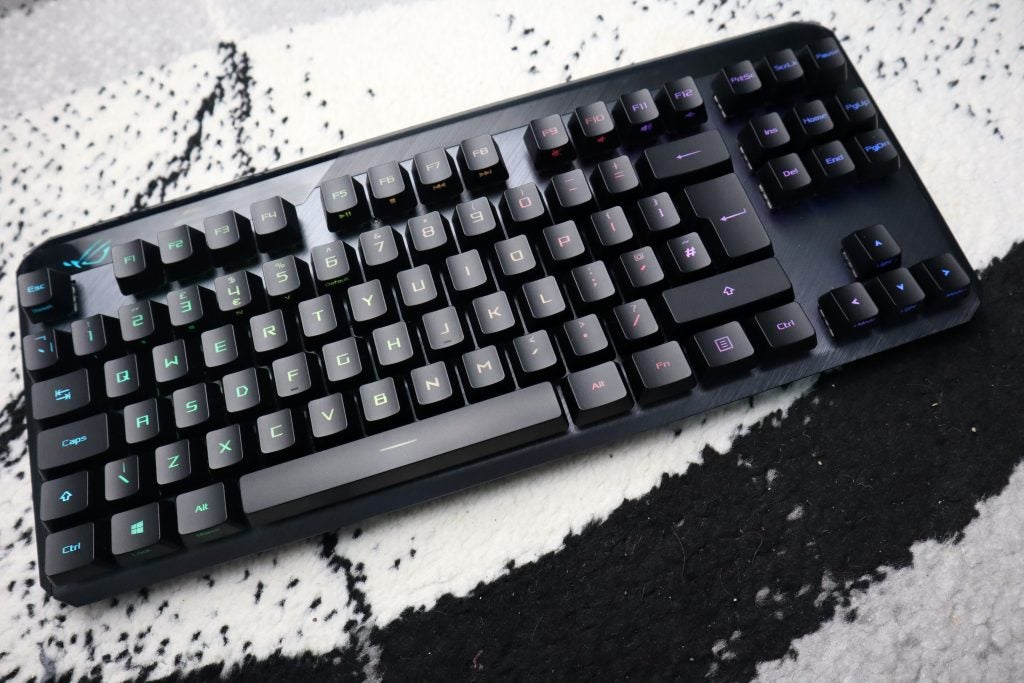
ROG Armoury can be pretty handy for the usual macro-customisation and backlighting preset options. However, next to even Roccat’s Swarm and especially Corsair’s iCue and Razer Synapse 3, it does seem a little bare for overall features, and its layout isn’t as intuitive or slick.
What the Claymore II does have on its side is a wireless take on Asus’ Aura Sync lighting, which means device lighting is synced even over a wireless connection. This could be especially useful if the Claymore is paired with the wireless variant of the Asus Gladius III mouse, for example.
Best Offers
Should you buy it?
If you want one of the best wireless gaming keyboards on the market:
The Asus ROG Claymore II is a fantastic gaming keyboard, with a top-notch performance. Its modular design also allows you more flexibility for your setup.
If you’re looking for a bargain:
Unless you have a spare £250 lying around, then this is one to avoid. It’s incredibly expensive, especially since you can still get great gaming keyboards for half the price.
Verdict
For those who have plenty of money to throw around on a wireless gaming keyboard, the Claymore II is a pretty good option. Its modular design is great and it offers a brilliant battery life. However, its cost is a rather big bugbear, especially since it lacks analog switches found with similarly priced rivals.
FAQs
It’s rather loud. If you want something quiet, you’d be better off looking elsewhere.
Yes, it features mechanical switches.
Yes, customisation is on offer through ROG Armoury.








